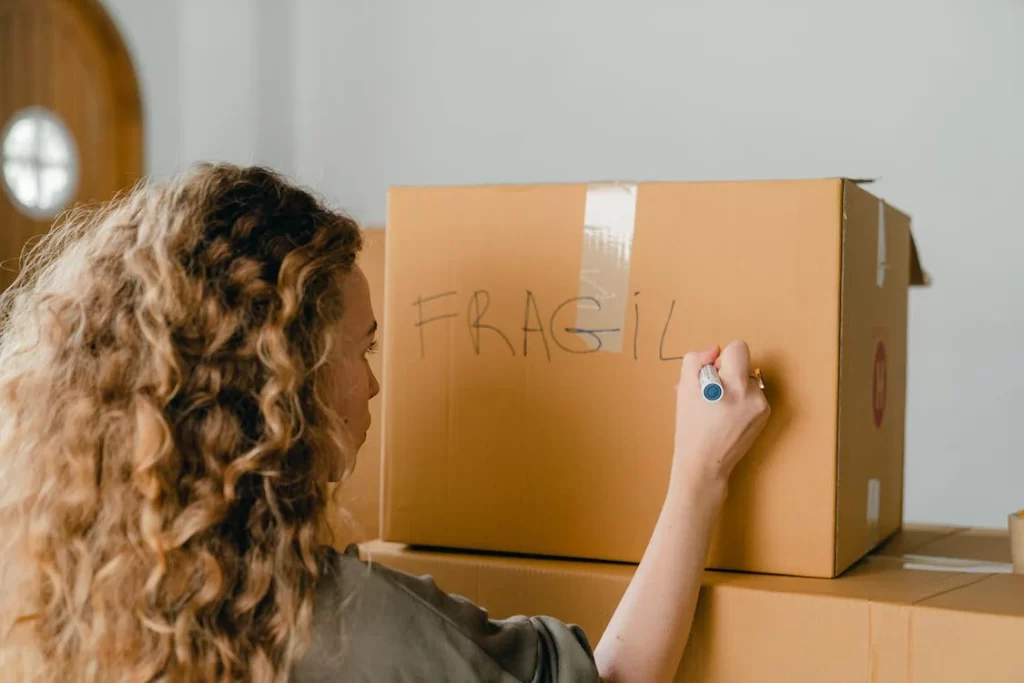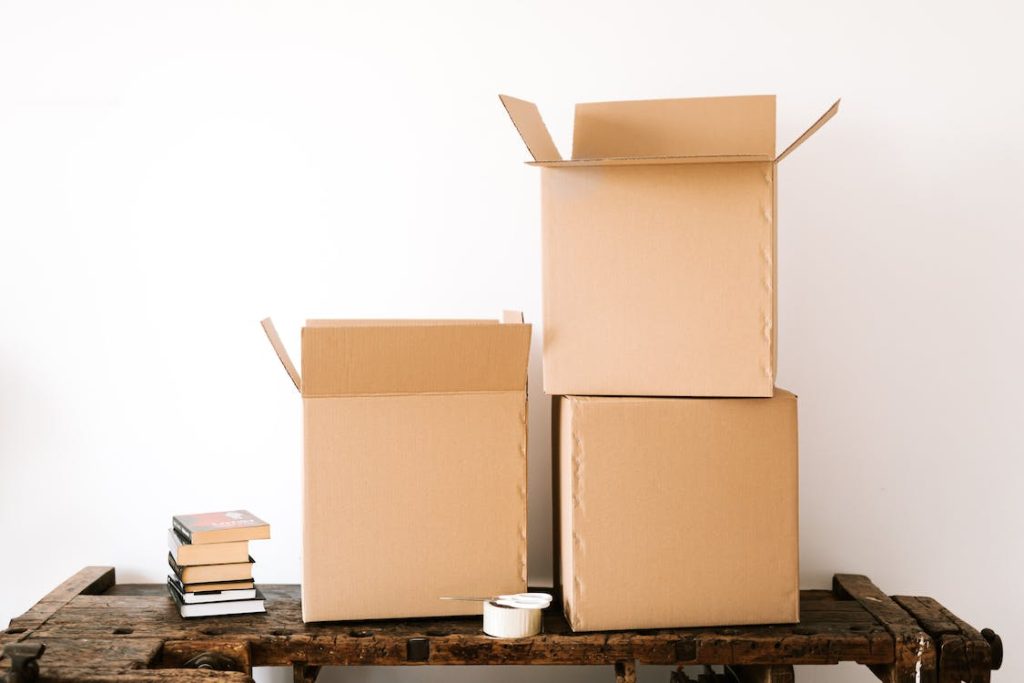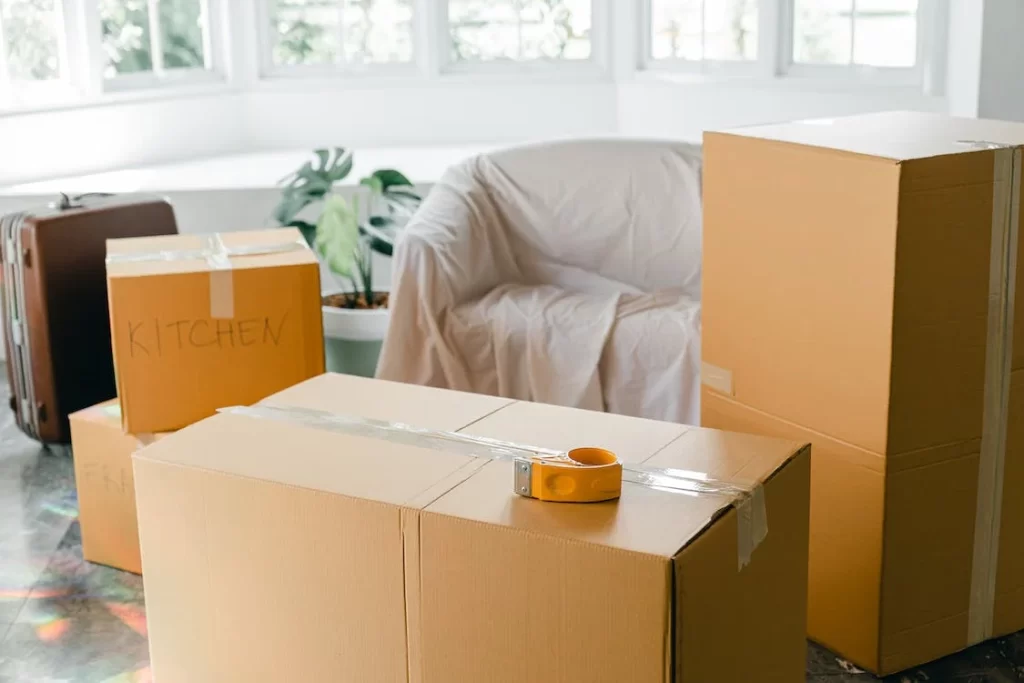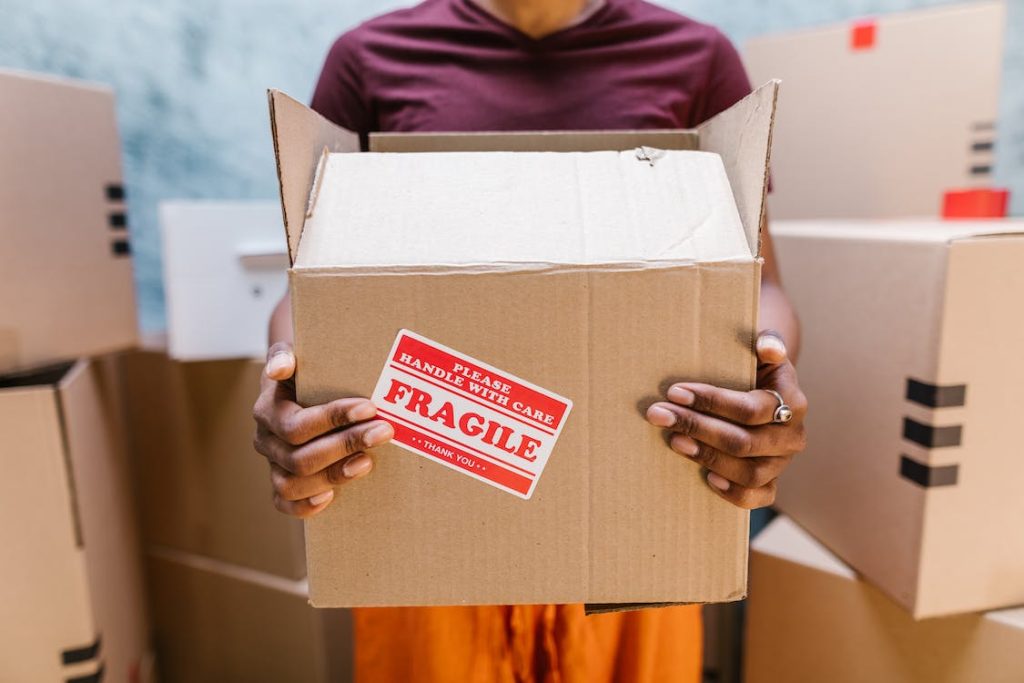Table of Contents
- Planning Your Packing Strategy
- Essential Packing Supplies: What You Need
- Packing Techniques: Room-by-Room Efficiency
- Labeling for Success: Organizing Your Boxes
- The First Night Box: Packing Essentials
- Maximizing Space and Minimizing Waste
- Packing Fragile Items Safely
- Moving Heavy Furniture Safely
- Conclusion
- Movers You Can Rely On: Top Sacramento Moving Company
Moving to a new home marks a significant milestone in one’s life, often filled with excitement and anticipation. However, the success of your move greatly depends on one critical aspect: packing. Proper packing not only ensures a damage-free moving experience but also sets the pace for a seamless transition into your new space. In this guide, we delve deep into efficient packing techniques, from the basics of wrapping and boxing up your items to specific strategies for moving fragile items and heavy furniture safely.
Understanding the art of packing is essential, whether you opt for DIY packing strategies or choose to hire professionals. By following our expert packing tips for moving, you’ll learn how to organize your belongings, utilize the best packing materials and supplies, and secure your items for transport, ensuring that everything arrives in pristine condition. This guide will equip you with the knowledge to pack efficiently and effectively, minimizing the common stresses associated with moving.
Prepare to transform your packing approach with proven methods that include everything from labeling boxes for moving to packing electronics for moving and managing moving valuable items. Our comprehensive packing checklist will help you keep track of your progress and ensure no item is left behind.
Embrace the journey of a well-planned move with Top Sacramento Moving Company as your guide. Let’s make your transition to your new home as smooth and stress-free as possible with these professional insights and techniques.

Planning Your Packing Strategy
Every successful move begins with a clear understanding of the task at hand. Before diving into packing tips for moving, it’s vital to assess the scope of your move. This involves evaluating everything from the size of your current home to the volume and type of belongings you plan to transport.
Efficient packing techniques start with inventory management:
- List all items: Go through each room and list all items. This helps in determining the amount of packing materials and supplies needed.
- Categorize belongings: Group your items into categories such as furniture, electronics, kitchenware, and personal items. This categorization aids in organizing belongings for a move.
Creating a Timeline for Packing
Creating a detailed packing timeline is crucial for a damage-free moving experience. Start packing well in advance, with a clear schedule that outlines when and how you will pack each room:
- Non-essential items first: Pack items you use less frequently early in the process to reduce clutter and ease the burden as moving day approaches.
- Daily use items last: Pack your everyday items a day before the move, ensuring you have everything you need until you move.
Tips for a packing timeline:
- Designate deadlines: Set deadlines for each phase of packing to keep the process on track.
- Allocate sufficient time: Give yourself more time than you think you’ll need for each room, as underestimating the time can lead to rushed and unsafe packing practices.

Essential Packing Supplies: What You Need
Comprehensive Checklist of Packing Materials
To ensure a damage-free moving experience, having the right packing materials and supplies is crucial. Here is a checklist of essential packing supplies that will help protect your belongings and organize your move:
- Best packing boxes for moving: Choose sturdy boxes in various sizes suited for different types of items. Boxes should be free of damage and strong enough to hold their contents without breaking.
- Bubble wrap and packing peanuts: Use these for cushioning and protecting fragile items. Bubble wrap is ideal for wrapping delicate items, while packing peanuts fill the voids in boxes, preventing items from shifting.
- Packing tape: A strong tape is necessary for securing boxes. Use high-quality packing tape to ensure boxes stay closed throughout the move.
- Labeling materials: Permanent markers and labels are essential for labeling boxes for moving. Clearly labeled boxes help with organizing and unpacking at your new home.
- Packing paper: For wrapping dishes, glasses, and other fragile items, packing paper offers a clean and ink-free alternative to newspapers.
Packing Supplies Guide
Planning your move involves more than just boxing up your belongings. It requires careful consideration of the packing supplies you’ll need to ensure a smooth transition to your new home. Use this comprehensive table to determine the quantity of each essential packing item based on the size of your move.
Sourcing Your Packing Supplies
Finding quality packing materials and supplies can be as simple as visiting a local moving supply store or ordering online. Here are tips to ensure you get the best materials at a good price:
- Compare prices online: Check various online retailers for the best deals on packing supplies. Buying in bulk can often save money.
- Reuse and recycle: Consider reusing boxes and other packing materials from previous moves, or ask friends and family if they have supplies to spare.
- Eco-friendly options: Look for biodegradable or recycled packing materials to reduce your environmental impact.
Investing in the right packing supplies will streamline the packing process, ensuring that your belongings are well-protected and organized, making unpacking in your new home much easier.
Packing Techniques: Room-by-Room Efficiency
General Packing Tips for Every Room
When it comes to efficient packing techniques, a room-by-room strategy not only helps in organizing belongings for a move but also ensures that nothing is overlooked. Here’s how to approach this method:
- Start with less used spaces: Begin packing rooms that are infrequently used such as guest rooms, basements, or attics. This allows you to sort through items that might not be needed immediately at your new home.
- Group similar items together: Packing similar items together, such as books with books or kitchenware with kitchenware, simplifies unpacking and reduces the chances of misplacing items.
- Use appropriate box sizes: Heavier items like books should go in smaller boxes while lighter items like linens can be packed in larger boxes. This prevents boxes from becoming too heavy and difficult to move.
Specific Tips for Kitchen, Bedroom, and Living Areas
Kitchen:
- Packing fragile items: Use bubble wrap and packing paper to protect fragile kitchen items such as dishes and glasses. Dish pack boxes are specifically designed for these items.
- Sealable bags for small items: Pack small kitchen gadgets and silverware in sealable plastic bags to keep them together.
Bedroom:
- Clothes packing: For tips for packing clothes, consider using wardrobe boxes that allow you to transfer clothes directly from closet to box, minimizing wrinkles and damage.
- Labeling boxes: Use labeling boxes for moving clearly with contents and destination, like “Master Bedroom – Clothes” to ensure they end up in the right place.
Living Area:
- Packing electronics for moving: Original boxes are ideal for packing electronics because they offer the best protection. If these aren’t available, use bubble wrap and sturdy boxes to secure these items.
- Furniture disassembly: For moving heavy furniture safely, disassemble furniture pieces where possible. Wrap legs and frames with padding to prevent scratches.
Moving Fragile Items and Special Belongings
Fragile items and special belongings such as artwork, antiques, and electronics require extra care. Here’s how to ensure they are moved safely:
- Use specialized packing materials: Items like mirrors and artwork benefit from mirror boxes, which offer enhanced protection.
- Double box: For extremely fragile items, consider double boxing, which involves placing one box within another and filling the space in between with cushioning materials like packing peanuts.
- Soft packing materials: For oddly shaped or extra delicate items, soft packing materials such as blankets and pillows can provide additional protection.
Packing room by room not only keeps you organized but also ensures that each item is given appropriate attention based on its needs and vulnerability to damage. This approach reduces the risk of items being damaged or lost and speeds up the unpacking process at your new home.
Labeling for Success: Organizing Your Boxes
Effective labeling is crucial for a smooth and organized move. It not only assists in the quick location and unpacking of items but also ensures that delicate items receive the careful handling they require. Here are some strategies to make the most of your labeling.
Labeling Boxes for Moving
Properly labeling your moving boxes is essential for an organized and efficient relocation process. By clearly marking each box with its contents and destination room, you can streamline the unpacking process and ensure that items are easily located when needed. Here are some tips for effective labeling:
Use Clear and Descriptive Labels
Ensure that your labels are easy to read and understand at a glance:
- Bold Marker: Use a bold marker to write labels on the top and sides of each box, making them visible from any angle.
- Detailed Descriptions: Include detailed descriptions of the box’s contents, such as “Kitchen Utensils” or “Bedroom Linens,” to provide clarity for both yourself and your movers.
- Destination Room: Clearly indicate the destination room for each box, such as “Living Room” or “Master Bedroom,” to facilitate efficient placement during the unloading process.
Color-Coding System
Implementing a color-coding system can further enhance the organization of your moving boxes:
- Assign Colors: Assign a specific color to each room in your new home and use colored labels or markers to correspond to these colors.
- Color-Coded Map: Create a color-coded map or legend indicating which color represents each room, making it easy for movers to identify where each box belongs.
Priority Labels
Identify boxes containing essential items or those that require special attention:
- Priority Boxes: Label boxes containing essential items that you’ll need immediately upon arrival at your new home as “Priority” or “Open First.”
- Fragile Items: Clearly mark boxes containing fragile items with “Fragile” labels or symbols to ensure they receive careful handling during transit.
Labeling Supplies
Ensure you have the necessary supplies for labeling your boxes effectively:
- Permanent Markers: Stock up on high-quality permanent markers in various colors to make labeling quick and easy.
- Labels and Stickers: Invest in adhesive labels or stickers specifically designed for moving, which are durable and easy to apply to boxes.
Keep a Master Inventory
Maintain a master inventory list to track the contents of each box:
- Numbering System: Assign a unique number to each box and keep a corresponding inventory list detailing the contents of each numbered box.
- Digital Copy: Create a digital copy of your inventory list for easy reference and accessibility throughout the moving process.
Creating an Inventory List
Maintaining an inventory list is an efficient packing technique that can save a lot of time during unpacking and is crucial in ensuring nothing is lost:
- Document box contents: Keep a digital or paper record of each box’s contents. This detailed documentation can be a lifesaver if you need to find something quickly before everything is unpacked.
- Numbering system: Assign a unique number to each box and note it in your inventory list. This method helps in tracking every item during the move and confirms that no box is missing.
How you organize your packed boxes, both in labeling and physical arrangement, will directly impact the efficiency of unpacking at your new home:
- Prioritize by room: Group boxes by their destination room. This organization makes it easier to distribute boxes to the correct rooms in the new house immediately upon arrival.
- Load last, unload first: Place boxes containing essential items on the truck last so they can be unloaded first. Clearly label these as “Open First” with a list of the essentials like toiletries, a change of clothes, and basic kitchen supplies.

The First Night Box: Packing Essentials
The first night in a new home can be hectic, and without proper preparation, you might find yourself rummaging through boxes for basic necessities. To avoid this scenario, packing an “Essentials Box” is a must. This box should contain everything you and your family need to comfortably spend the first night in your new home without having to unpack everything.
What to Include in Your Essentials Box
Creating a well-thought-out Essentials Box involves anticipating your immediate needs upon arrival:
- Basic toiletries: Include items like toothbrushes, toothpaste, soap, shampoo, towels, and toilet paper.
- Change of clothes and pajamas: Pack enough for the first night and the following day.
- Bedding essentials: Include sheets, pillows, and blankets to ensure a good night’s sleep.
- Medications and first aid kit: Don’t forget any prescription medications, basic pain relievers, and first aid supplies.
- Snacks and bottled water: Moving can be exhausting, so having snacks and water readily available is crucial.
- Basic kitchen utensils: Include a small pot or pan, some cutlery, plates, and cups if you plan to eat before unpacking your kitchen.
- Charging cables for electronic devices: Ensure you can charge your smartphones, tablets, and other essential gadgets.
- Important documents: Keep your important papers such as IDs, lease or purchase papers, and insurance documents handy.
Pack Strategically
The Essentials Box should be packed last and unloaded first. Here’s how to ensure it’s packed effectively:
- Use a clear plastic bin: This makes the box easily distinguishable from the myriad of cardboard boxes. Plus, seeing inside can help you quickly locate needed items.
- Label clearly and boldly: Mark the box with “Essentials” or “Open First” on all sides to ensure it’s easily identifiable.
- Keep it accessible: Make sure this box is last on the truck and first off, so you have immediate access without having to search through other boxes.
Having an essentials box ready can dramatically reduce the stress of moving day, allowing you and your family to transition into your new space with comfort and ease.

Maximizing Space and Minimizing Waste
Efficient packing not only saves time and effort but also helps minimize waste during the moving process. By employing smart packing techniques and being mindful of the environment, you can streamline your move while reducing your ecological footprint.
Use Every Available Space
Utilize every inch of space in your boxes to minimize the number of boxes needed:
- Fill gaps: Fill empty spaces in boxes with soft items like clothing or towels to prevent items from shifting during transit.
- Pack strategically: Place heavier items at the bottom and lighter ones on top to ensure boxes are balanced and sturdy.
- Utilize hollow items: Pack smaller items inside larger ones, such as putting spices inside pots or pans.
Choose Eco-Friendly Packing Materials
Opt for environmentally friendly packing materials to reduce waste:
- Biodegradable packing peanuts: Instead of traditional styrofoam peanuts, use biodegradable options made from cornstarch or recycled materials.
- Eco-friendly bubble wrap alternatives: Consider using alternatives like recycled newspaper, tissue paper, or air pillows to protect fragile items.
- Reusable containers: Use bins, baskets, and suitcases you already own instead of disposable cardboard boxes.
Recycle and Reuse
Minimize waste by recycling and reusing packing materials:
- Recycle boxes: After unpacking, flatten cardboard boxes for recycling or pass them on to someone else who’s moving.
- Reuse packing materials: Save packing materials like bubble wrap, packing paper, and boxes for future moves or donate them to others in need.
Donate Unwanted Items
Before packing, declutter and donate items you no longer need or use:
- Reduce the load: Moving fewer items means less packing material and fewer boxes, ultimately reducing waste.
- Donate responsibly: Donate usable items to local charities, shelters, or thrift stores instead of throwing them away.
Packing Fragile Items Safely
Protecting fragile items during a move requires extra care and attention to ensure they arrive at your new home intact. Whether it’s delicate china, precious heirlooms, or expensive electronics, here are some professional packing methods to safeguard your fragile belongings:
Wrap Items Securely
Proper wrapping is key to protecting fragile items from damage:
- Bubble wrap: Wrap each fragile item in several layers of bubble wrap to cushion against impacts.
- Packing paper: Use packing paper to wrap items before adding an extra layer of bubble wrap for added protection.
- Styrofoam sheets: For particularly delicate items, sandwich them between layers of styrofoam sheets for additional shock absorption.
Choose the Right Box
Select sturdy boxes that are appropriate for fragile items:
- Double-walled boxes: Use double-walled boxes for added durability, especially for heavy or fragile items.
- Specialty boxes: Invest in specialty boxes designed for specific fragile items such as dish boxes for china and glassware or wardrobe boxes for clothing.
Pack Items Securely
Proper packing techniques are essential for preventing damage during transit:
- Use dividers: Place dividers or cardboard inserts inside boxes to keep fragile items separated and prevent them from shifting.
- Layer items: Pack heavier items at the bottom of the box and lighter items on top, with cushioning material in between each layer.
- Fill empty spaces: Fill any empty spaces in the box with packing material to prevent items from moving around during transit.
Label Boxes Clearly
Clearly labeling boxes containing fragile items helps movers handle them with care:
- Fragile stickers: Use “Fragile” stickers or labels to indicate boxes containing delicate items, ensuring they are treated with extra care during the move.
- Top-load instructions: Label boxes with “Top Load Only” to indicate that they should be placed on top of other boxes to avoid crushing fragile items.
Handle with Care
Communicate with your movers to ensure fragile items are handled properly:
- Provide instructions: Clearly communicate with your moving team about the presence of fragile items and provide instructions on how they should be handled.
- Supervise packing: If possible, supervise the packing of fragile items to ensure they are packed securely and handled with care.

Moving Heavy Furniture Safely
Moving heavy furniture can be one of the most challenging aspects of relocating to a new home. However, with the right techniques and precautions, you can ensure a safe and efficient moving process. Here are some tips for moving heavy furniture safely:
Gather the Right Tools and Equipment
Before you begin moving heavy furniture, gather the necessary tools and equipment to make the process easier and safer:
- Furniture Sliders: Use furniture sliders to reduce friction and make it easier to slide heavy items across floors.
- Moving Straps: Invest in moving straps or lifting straps to help distribute the weight of heavy furniture evenly and reduce strain on your back.
- Furniture Dollies: Use furniture dollies to transport large and heavy items more efficiently, especially over longer distances.
- Protective Gear: Wear gloves and closed-toe shoes to protect your hands and feet from injuries during the moving process.
Disassemble Furniture When Possible
If feasible, disassemble large pieces of furniture to make them easier to move:
- Remove Legs and Hardware: Take apart furniture by removing legs, shelves, and any other detachable components.
- Use Allen Wrenches or Screwdrivers: Keep the necessary tools handy to disassemble furniture quickly and efficiently.
- Wrap and Label Parts: Use protective padding to wrap disassembled parts and label them accordingly to simplify reassembly later.
Lift with Proper Technique
When lifting heavy furniture, use proper lifting techniques to avoid injury:
- Bend Your Knees: Keep your back straight and bend your knees to lift heavy items from a squatting position.
- Lift with Your Legs: Use the strength of your legs, rather than your back, to lift and carry heavy furniture.
- Avoid Twisting: Avoid twisting your body while lifting or carrying heavy items to prevent back strain or injury.
Enlist Help
Moving heavy furniture is a job best done with assistance:
- Recruit Friends or Family: Ask friends or family members to help you move heavy furniture, making the task more manageable and safer.
- Hire Professional Movers: Consider hiring professional movers for assistance with moving large and bulky items, especially if you have heavy or fragile furniture.
Protect Floors and Walls
Take precautions to prevent damage to floors and walls during the moving process:
- Use Furniture Blankets: Wrap heavy furniture in furniture blankets or moving pads to protect surfaces from scratches and dents.
- Cover Corners and Edges: Use corner guards or foam padding to protect walls and doorframes from accidental bumps or scratches.
- Lay Down Protective Flooring: Lay down cardboard or protective flooring mats to shield hardwood floors or carpets from damage caused by heavy furniture.
Conclusion
Moving can be a stressful experience, but with the right strategies and preparation, you can minimize hassle and ensure a smooth transition to your new home. By following the packing tips outlined in this guide, you can protect your belongings, prevent damage, and streamline the moving process from start to finish.
Movers You Can Rely On: Top Sacramento Moving Company
Ready to make your move? Contact Top Sacramento Moving Company today for professional moving services you can trust. From packing and loading to transportation and unloading, our experienced team is here to make your relocation as smooth and stress-free as possible. Get started with a free quote now!
